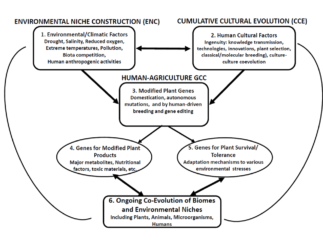In our recent paper, “Understanding agriculture within the frameworks of cumulative cultural evolution, gene-culture coevolution and cultural niche construction” (Human Ecology 47:483–497), we apply the framework and concepts of Gene-Culture Coevolution (GCC), Niche Construction (NC) and Cumulative Cultural Evolution (CCE) to agriculture. All three concepts were originally conceived with respect to human culture and human genes, and later on also with animal genes (mainly domesticated animals). However, to the best of our knowledge, ours is the first full discussion of how plant genes coevolve with human cultural practice.
The Evolution of Robustness
In Darwin’s theory of evolution by natural selection, the key phrase is “survival of the fittest”: those organisms that are best fit to carry out the tasks of living in their world are the ones that survive. But they won’t live forever — they must have offspring that inherit the traits that made them fit in order for evolution to proceed.
This conceptual framework is fine for understanding the evolution of traits that affect survival and numbers of offspring. But what about the rules of inheritance themselves? These rules are also organismal traits, although they need not have any effect on how well the parents survive or how many offspring they have. In fact, the rules of inheritance say what the offspring are, rather than how many there are. Classical mathematical models of evolution have little to say about the evolution of these rules. How, then, can “survival of the fittest” shape the rules of inheritance?
Early Career Spotlight with Illiam Jackson
Illiam Jackson just wrapped up his work at Tobias Uller’s lab (Lund) and is moving on to great things. We talked to Illiam about himself, his work, and papers he liked under the EES project.
Check out his new paper:

Early Career Spotlight with Thomas Oudman


